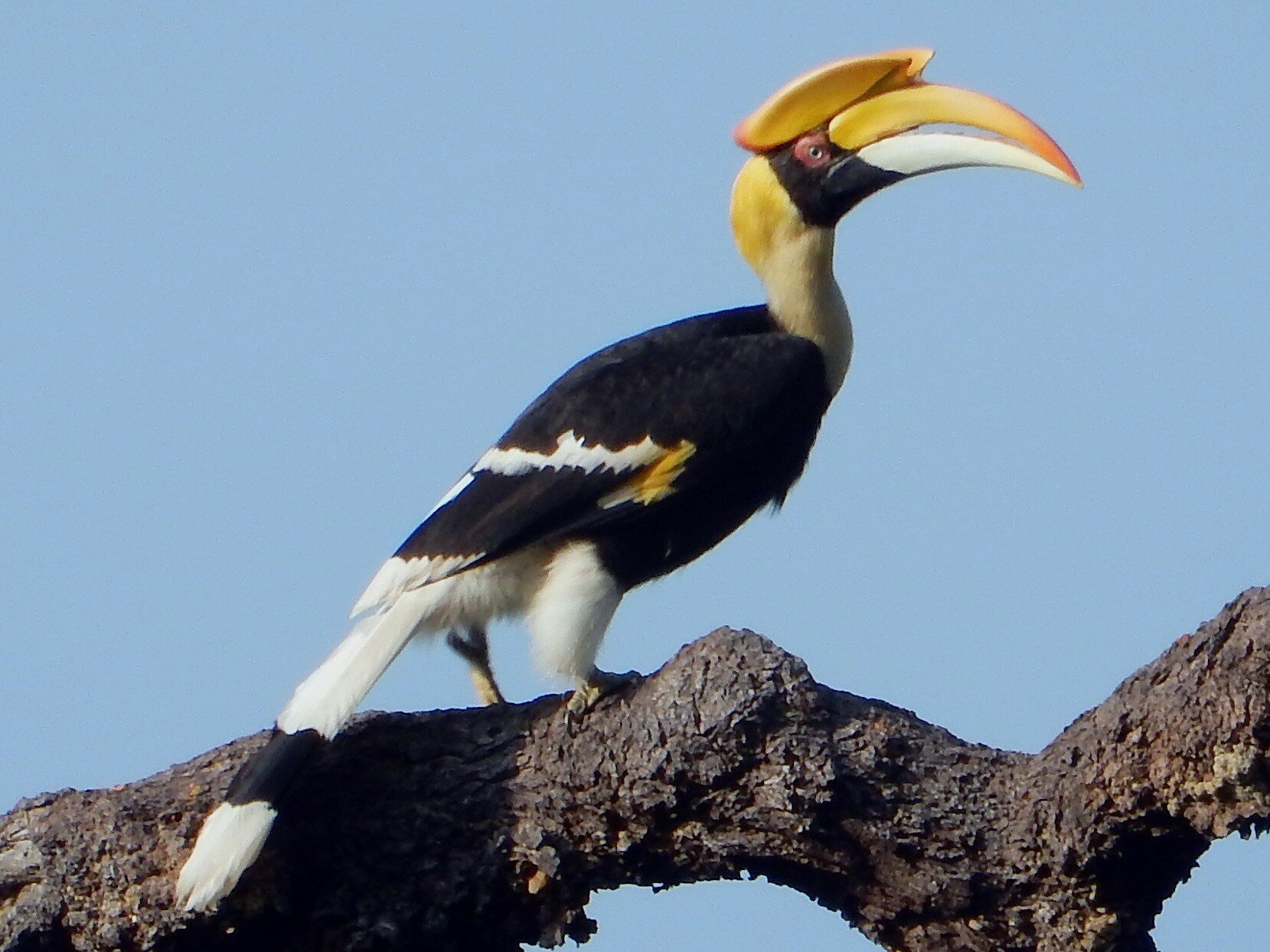Context: Great Hornbill (Malamuzhakki Vezhambal), Kerala’s state bird, was spotted in the coastal area of Kakkampara near Ezhimala in Kannur, far from its usual forest habitats.
About Great Hornbill (Buceros bicornis)
Distribution
- Great Hornbill is found in the Indian subcontinent and Southeast Asia.
- In India, seen in the Western Ghats and forests along the Himalayas.

Habitat
- Inhabits wet evergreen and deciduous old-growth forests.
- Found at elevations between 600–2000 meters.
- Prefers tall trees that rise above the forest canopy for nesting.
Physical Features
- Size: 95 to 120 cm in length; wingspan: 151 to 178 cm.
- Weight: Around 3 kg.
- Coloration:
- Black body, head, and wings.
- White neck, abdomen, and tail (tail has a black band).
- Bright yellow to red hues due to oil secreted by the preen gland.
- Notable traits:
- Large hollow casque atop the bill, used for combat and courtship.
- Prominent eyelashes.
- Sexual dimorphism:
- Males have red irises and larger bills/casques.
- Females have white irises.
Diet
- Primarily frugivorous (fruit-eating).
- Opportunistically eats small mammals, reptiles, and birds.
Conservation Status
- IUCN Red List: Vulnerable.


 Bonnet Macaques: Habitat, Features, Beha...
Bonnet Macaques: Habitat, Features, Beha...
 Periyar Tiger Reserve, Map, Flora, Fauna...
Periyar Tiger Reserve, Map, Flora, Fauna...
 Project Cheetah in India, Objectives, Ch...
Project Cheetah in India, Objectives, Ch...




















